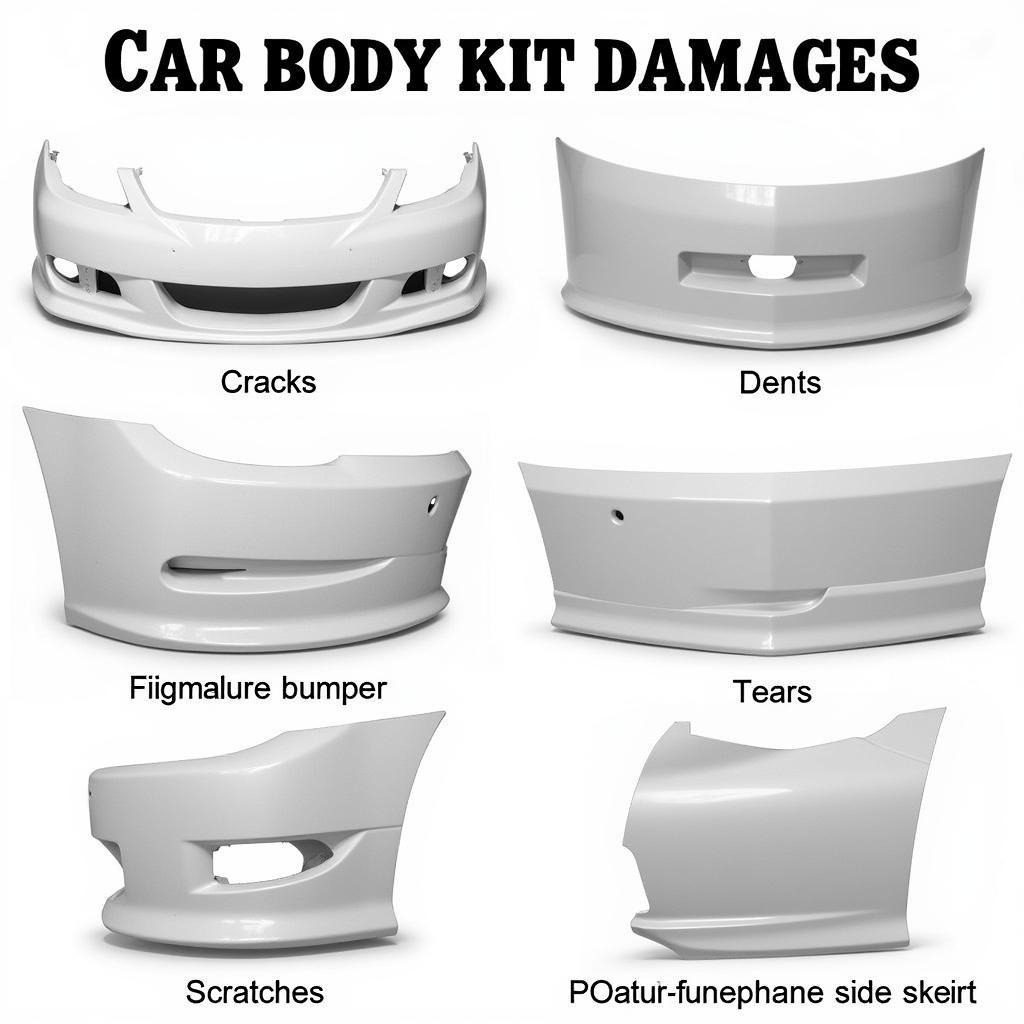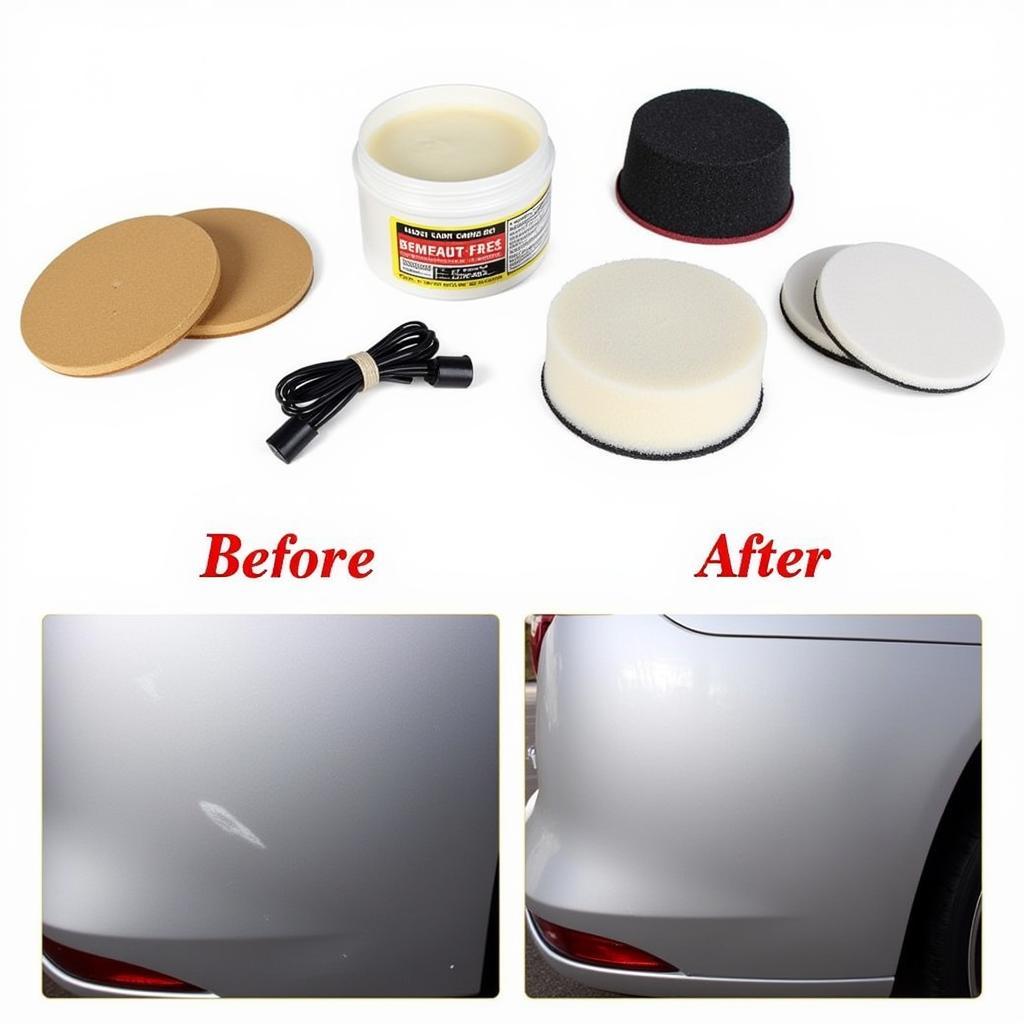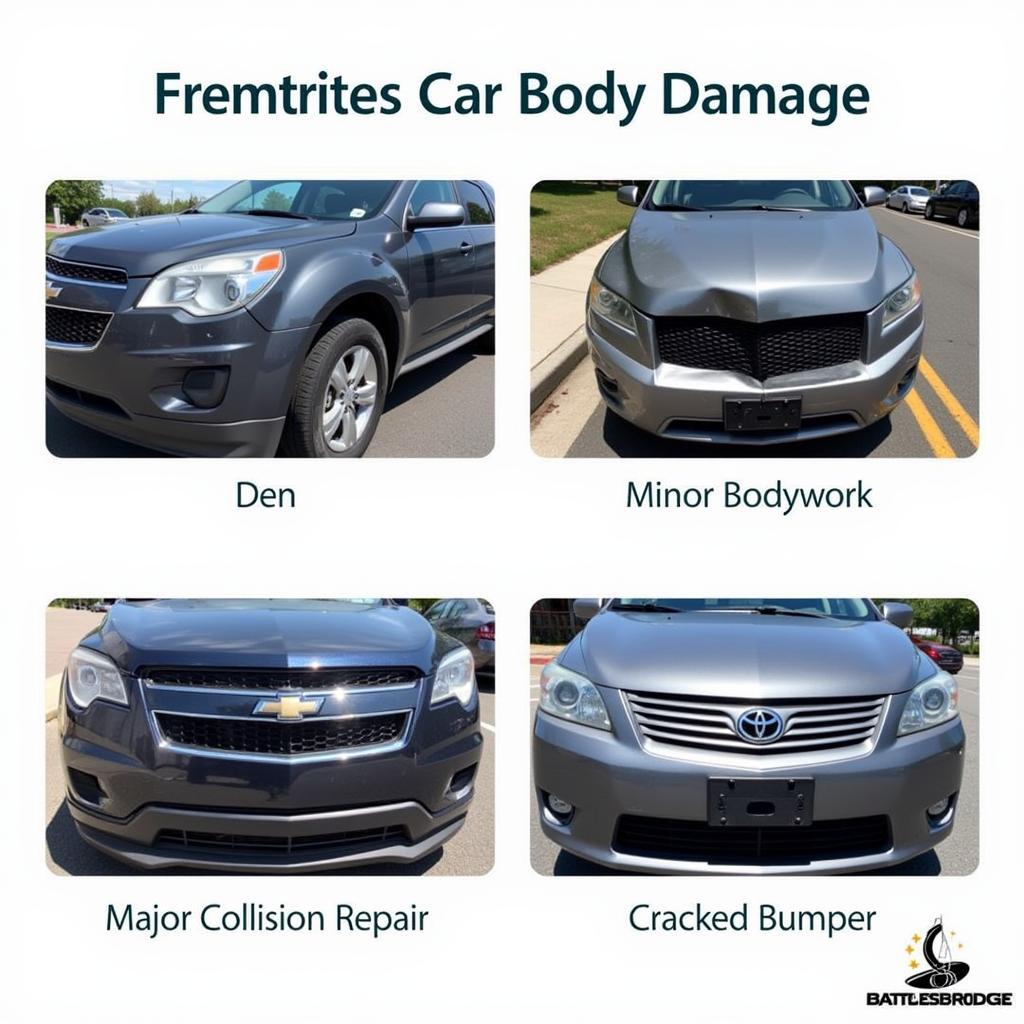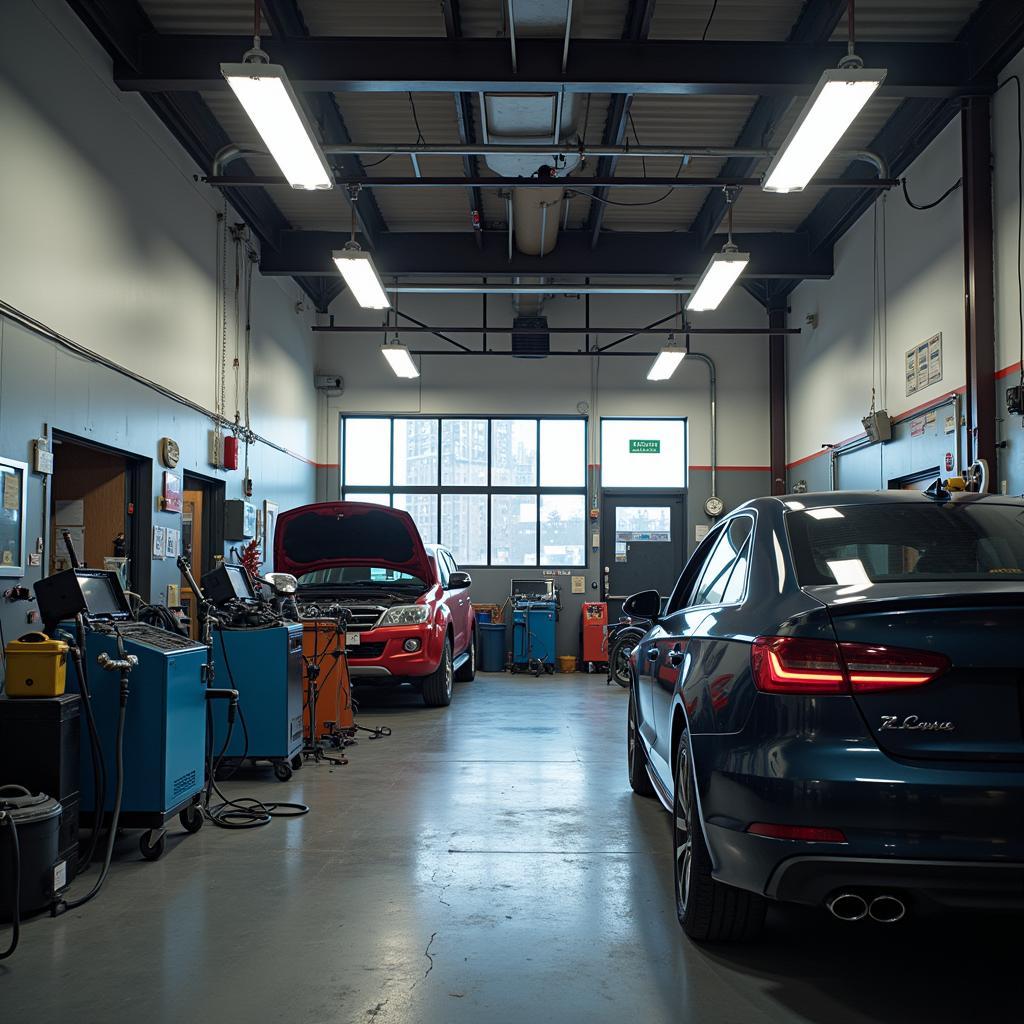
Types of Car Body Kit Damage
Car Body Kit Repair can be a daunting task, whether you’re dealing with minor scratches or significant damage. This guide will provide you with valuable information on everything from identifying the damage to choosing the right repair method and ensuring a professional finish. We’ll explore various techniques, tools, and materials to help you restore your car’s body kit to its former glory.
Understanding Car Body Kit Damage
Before diving into repairs, it’s crucial to understand the type and extent of the damage. Different materials require specific repair approaches, and assessing the damage accurately will help you choose the correct method. Common body kit materials include polyurethane, fiberglass, and ABS plastic. Each material has its own strengths and weaknesses, affecting how it reacts to impacts and how it should be repaired. For instance, polyurethane is flexible and resistant to cracking, while fiberglass is strong but prone to shattering upon impact.
 Types of Car Body Kit Damage
Types of Car Body Kit Damage
Identifying the Material
Knowing your car body kit’s material is the first step towards effective repair. If you’re unsure, check your car’s owner’s manual or contact the manufacturer. Correctly identifying the material will guide you in selecting appropriate repair products and techniques. Using the wrong products can lead to ineffective repairs or even further damage the kit.
Car Body Kit Repair Methods
Several methods can be used for car body kit repair, ranging from DIY fixes for minor scratches to professional repairs for significant damage. Choosing the right method depends on the severity of the damage, your budget, and your DIY skills.
DIY Repairs for Minor Scratches and Scuffs
car body scratch repair kit are excellent for tackling minor imperfections. These kits usually include sandpaper, fillers, primers, and paint to match your car’s color. For shallow scratches, you can often buff them out with polishing compound. Deeper scratches may require filling and repainting.
Professional Repairs for Major Damage
For major cracks, dents, or tears, professional repair is often the best option. Professionals have the expertise and specialized tools to restore even severely damaged body kits. They can also ensure color matching and a seamless finish, preserving the aesthetic appeal of your car.
car body kit repair singapore offers excellent options for those located in Singapore, providing high-quality repairs and experienced technicians.
Choosing the Right Repair Kit
Selecting the right car body damage repair kit depends on the material of your body kit and the type of damage. For instance, fiberglass repair kits are specifically formulated for fiberglass body kits and include resin and fiberglass matting for patching holes and cracks.
“Choosing the right repair kit is crucial for successful car body kit repair,” says John Smith, a veteran automotive repair specialist with over 20 years of experience. “Using the wrong products can compromise the repair’s integrity and lead to further problems down the line.”
Tools and Materials for Car Body Kit Repair
Having the right tools and materials will make the repair process smoother and more efficient. Essential tools include sandpaper, masking tape, a heat gun, and body filler applicators. Necessary materials may include body filler, primer, paint, and clear coat.
car body dent repair tool kit provide a comprehensive set of tools for tackling dents and other minor damage, making DIY repairs easier.
Safety Precautions
car body epoxy with gause repair kits uk offer durable repair solutions, but always remember safety. When working with repair materials, ensure adequate ventilation and wear appropriate safety gear, such as gloves and eye protection.
Conclusion
Car body kit repair requires careful assessment, proper technique, and the right tools and materials. Whether you choose DIY methods for minor damage or seek professional assistance for more significant repairs, understanding the process and taking the necessary precautions will ensure a successful outcome, restoring your car’s appearance and preserving its value. Remember to always prioritize safety and choose the right products for your specific car body kit material.
FAQ
- Can I repair a cracked fiberglass body kit myself?
- What type of filler should I use for a polyurethane body kit?
- How do I match the paint color for my car body kit?
- How long does it take for body filler to dry?
- What is the best way to remove scratches from a car body kit?
- When should I consider professional car body kit repair?
- Where can I find reliable car body kit repair services?
Need help with car body kit repair? Contact us via WhatsApp: +1(641)206-8880, or Email: [email protected]. Our 24/7 customer support team is ready to assist you.




